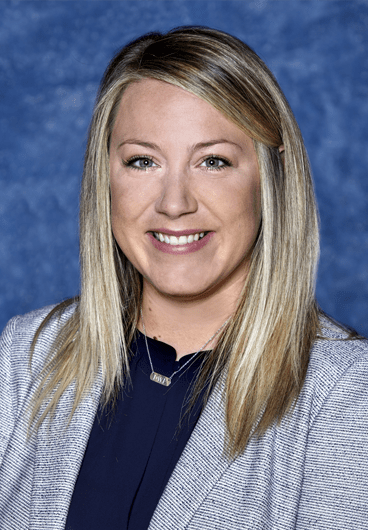
Kelyn Marmolejo
Cantwell’s Bridge Middle School
Townsend, Delaware
kelyn.marmolejo@appo.k12.de.us
Best Practices
1) Assistant Principal’s Role as Instructional Leader: Being a sound instructional leader is a critical role of an assistant principal. At the end of the day, our job is to ensure academic achievement. Having a pulse on the instructional programs within the building is necessary to make progress. Something I am proud of is Appoquinimink School District’s instructional leadership capacity. I am grateful for the opportunity to have such a pivotal role in the instructional growth of our educators.
In Appoquinimink School District, we have a structure and system in place that allows us to see each teacher, each week to provide targeted feedback directly aligned to our instructional focuses of our building and district. Being in each classroom for about 12-15 minutes each week allows me to see the progress of our students and our instructional programs, as well as engage in meaningful professional dialogue with our educators to help them achieve their own professional growth goals. Having a clear vision and a framework helps in accomplishing this. As an administrative team, we map out the year and create walkthrough cycles. We cohort teachers and assign an administrator to each cohort for 6-8 weeks. During a cycle, the assigned administrator will visit each classroom weekly to provide written feedback, as well as conduct one face-to-face meeting at the end of the cycle to discuss trends in the feedback. In the face-to-face meeting we discuss teaching strategies, offer support and create plans for growth. After the completion of the cycle, we rotate cohorts and continue the process. This structure is collaborative and valuable for both the teacher and the administrator.
It is important to share how we as administrators develop our own skills and grow as instructional leaders. At Cantwell’s Bridge Middle School, we meet weekly as a building administrative team to review feedback that we have offered staff and calibrate. This holds us accountable to our district’s framework and strengthens our feedback. In addition, administrators throughout the district conduct regular walkthroughs with content specialists and debrief about trends across the schools to ensure that our feedback is intentional. We also participate in leveled walkthroughs where a group of administrators, along with district office personnel, visit a few classrooms in each other’s schools, draft feedback and come together to debrief about what strategies we saw and what feedback we would offer. This helps strengthen our skills and collaborate with peers to continue to grow as instructional leaders.
An assistant principal’s role as an instructional leader is important for any school’s success. It is imperative that assistant principals invest in themselves and build their instructional leadership capacity. I am proud of the work we do in Appoquinimink and the focus we have on academic achievement. I have grown so much as an instructional leader due to the structures, as well as the support provided by my district.
2) Teacher and Staff Development: At Cantwell’s Bridge Middle School, we pride ourselves on having an extremely dedicated and dynamic staff. One of our core values is continuous improvement and we strive for excellence on a daily basis. Our staff is eager to learn and grow, often seeking feedback and refining their skills. Much of our staff is committed to professional development. At the end of the 2023 school year, we had 83% of our staff leading in some capacity, whether it be PLC lead, advisor, coach, club lead, department chair, grade level chair, etc. This shows our staff’s passion and commitment to the work.
With such a talented staff, we push ourselves as administrators to ensure we are providing our highest performing staff with opportunities to grow as well. We have encouraged and nominated many of our staff members to lead district wide professional development sessions, attend and present at state/national conferences, lead on district level committees, enroll in aspiring administrator programs and mentor more novice staff. We are proud of the work that our staff has accomplished, but we truly believe in opportunities for growth and work hard to ensure that all our teachers and staff are supported through their educational journey.
Aside from building our staff’s leadership capacity, we are diligent in providing targeted and meaningful professional development opportunities that align with our school and district goals, vision and core values. At the district level, as well as the building level, we plan out professional development for the year to help us achieve our goals. We set high expectations but provide high levels of support so that our educators are gaining the necessary skills to apply to their lessons immediately. Typically, professional development at the school level is intended to support a current instructional focus. For example, if we have a focus of student discourse, we may offer professional development on collaborative structure strategies to foster student discussion. Then, administrators would visit classrooms and provide feedback on the strategies staff implement within their lessons. With this intentional planning, coupled with teacher and staff input, we have received positive feedback on the professional development offered.


